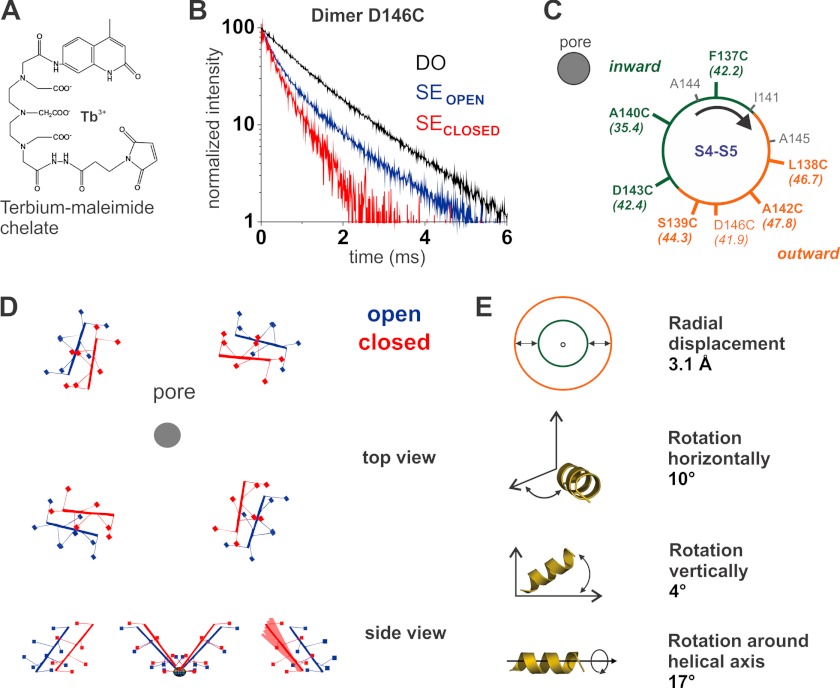FIGURE 2.
S4-S5 linker movement during gating determined by LRET measurements. A, structure of the lanthanide complex used as donor. B, acceptor-sensitized emission (SE) is shown for the D146C dimer reconstituted in DOTAP (red) and in DPhPC (blue). τSE = 285 μs for the closed state (red), and τSE = 602 μs for the open state (blue). In black, the control of donor in the absence of acceptor is shown (τDO = 1.17 ms). C, residues of the S4-S5 linker of KvAP are projected on a helical wheel with an α-helical periodicity. The smallest experimental distances are from the residues on the inward side of the helix (green) with respect to the pore, and the largest ones, form the outward side (orange). D, the top view of the movement of the S4-S5 linker shows the radial displacement and the horizontal rotation it undergoes from the open state (blue) to the closed state (red). The side view shows the vertical rotation. One subunit of the closed state is superposed with all possible helix orientations where the residues remain within the error margins of the experimental distances. From these variations, we can estimate the error for each parameter: radial distance to the pore, ± 0.1 Å; angle with respect to the helix axis, ± 4°; deviation from horizontal plane, ± 4°; angle within horizontal plane, ± 1°. E, the three-dimensional movement of the S4-S5 linker is decomposed into four components.

